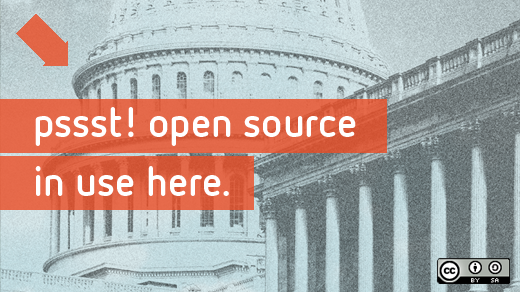The US Department of Veterans Affairs (VA) is the second largest agency of the US federal government. It employs more than 280,000 people, and with an annual budget close to $150 billion it provides health care services to close to 8.7 million patients, and benefits to close to 23 million veterans.
The VA also operates the nation's largest integrated health care system, with more than 1,700 hospitals, clinics, community living centers, domiciliaries, readjustment counseling centers, and other facilities. And, the agency has been one of the most progressive ones in the federal goverment on adopting open source at multiple levels.
Stephen Warren, the acting VA CIO was recently interviewed on the topic of giving continuity to an open source initiative started by the previous CIO Roger Baker. The VA CIO oversees more than 8,000 IT professionals and manages an annual budget of $3.3 billion. When interviewed at WJLA in the ABC channel, Mr. Warren shared the following insights.

Where is the federal government on open source adoption and where is it going?
You will see that most government agencies, if not all, are using open source solutions today, whether software or hardware. It is core in our infrastructure because we see the business value with using those tools.
In 2011, the VA implemented its first major open source program based on electronic health records, where are we going from there?
We reached out and we embraced this concept of open source for electronic health records. It pretty much continued a relationship that we have had with the electronic healthcare record community in the past.
VistA, the worldclass system we use, actually was already an open source tool, we have been sharing it, but we have not done it in a very clean way, we have not done it in a way to build a community.
It is one of the reasons why we actually facilitated the start of that community, OSEHRA. We put resources into it to get it started, and now there is this vibrant organization out there, individuals from across the nation who are using the same electronic healthcare delivery system, VistA, that we do at the VA.
What we are seeing is that lots of innovation is taking place out in the field, and we actually have a process in place to start bringing that technology that has been developed out in the community, into the VA, and using it as part of our healthcare delivery system.
So we see more and more, not just on the healthcare side, but we are applying those tools and technologies across the whole enterprise.
Proprietary software is big business. Some waterfall projects in the federal level involve multi-billion dollar contracts. As your agency adopts more open source, have you experienced any push back from developed software companies?
It is a trade-off between the two. [...] we work with many partners, folks that provide those proprietary systems as well as individuals who help install and configure open source systems. And what we have done, is we actually look to where you need a proprietary solution, where you need to pay the extra, we use it, because a particular mission need; but we are driven more and more to those open source solutions.
Most companies may not realize it, but a huge part of the infrastructure that they run on today is actually built on open source hardware and software. In fact, if you think about Google, Facebook and a lot of the large social media delivery companies, they no longer sell you the software, it is an open source software, because the value proposition is the service on top of those tools, not the value that is on the tool. Beyond that, they see a huge community of individuals who can contribute to moving that technology forward, with the focus on the service delivered, not the technology below it.







Comments are closed.